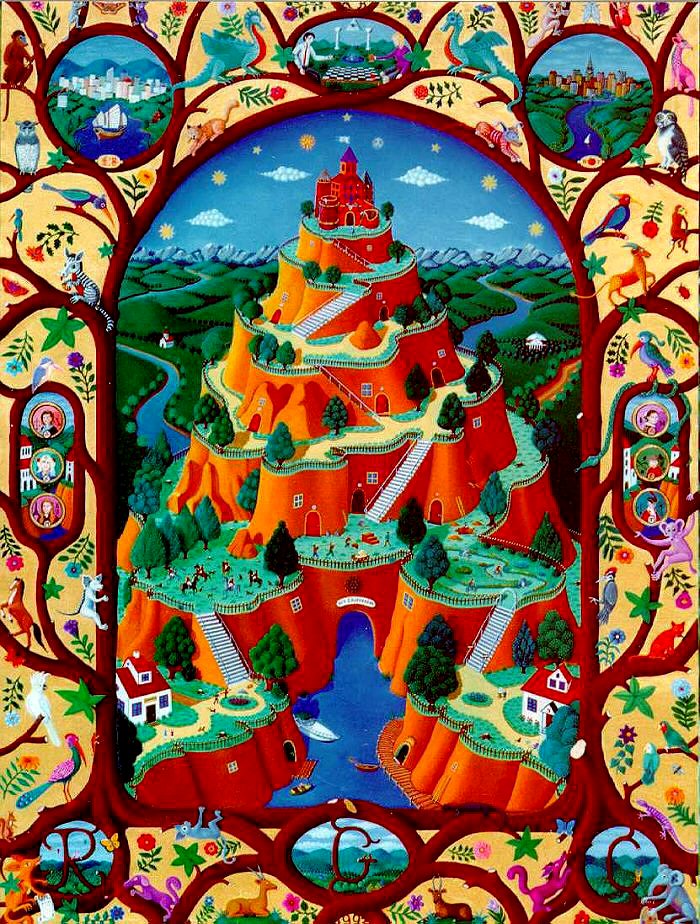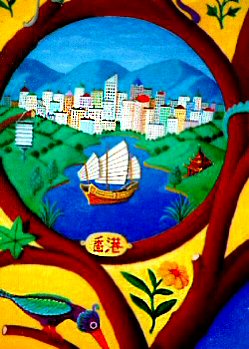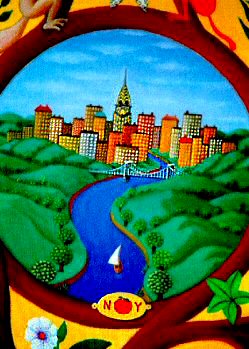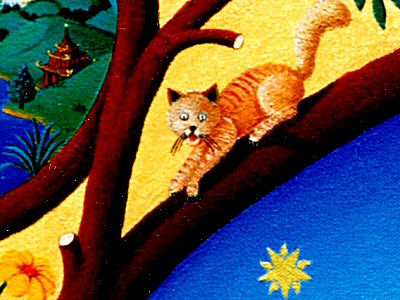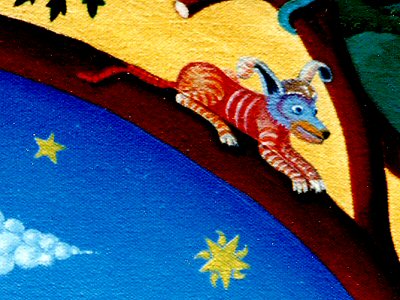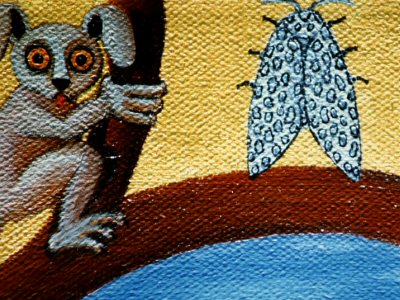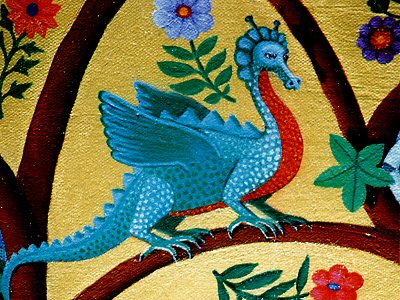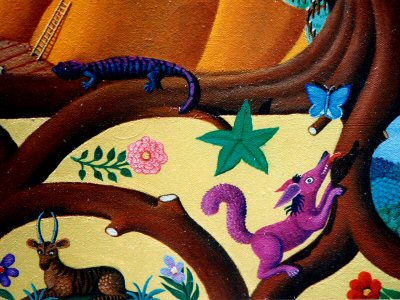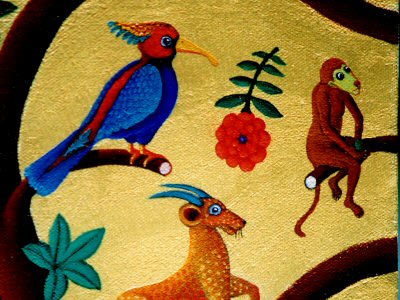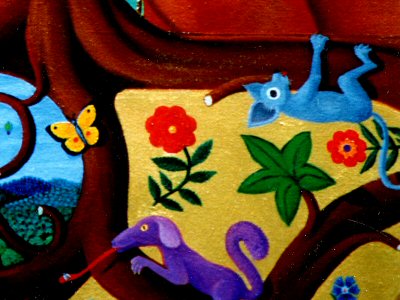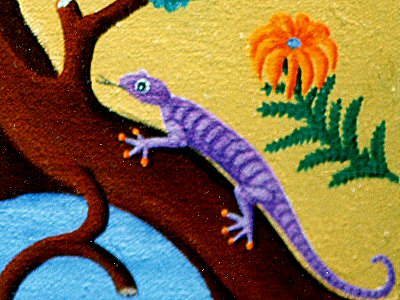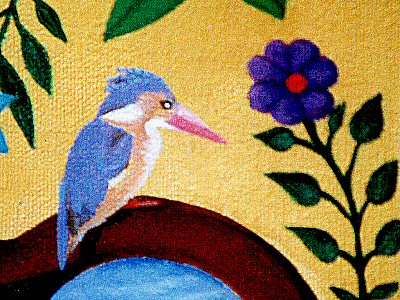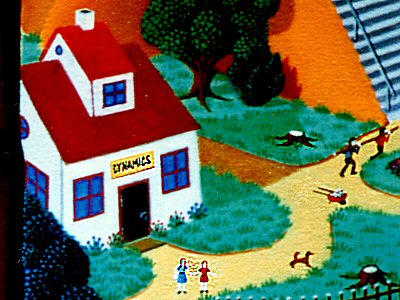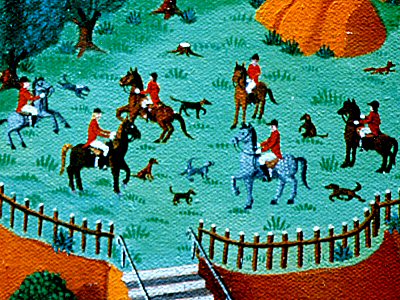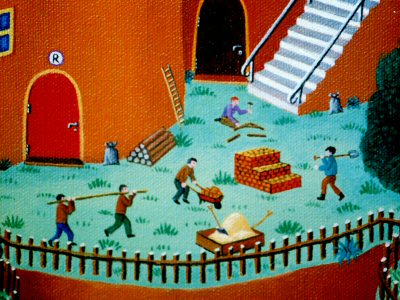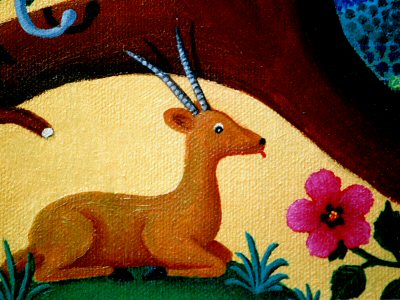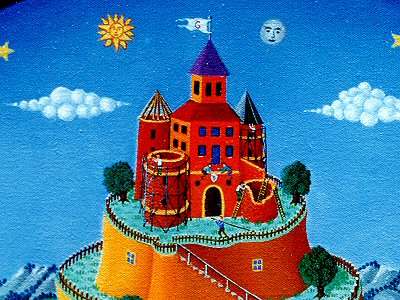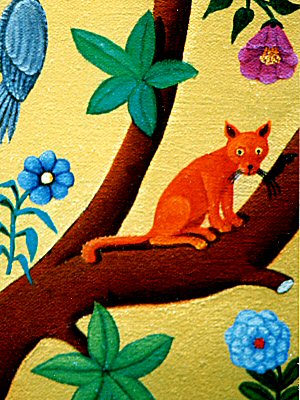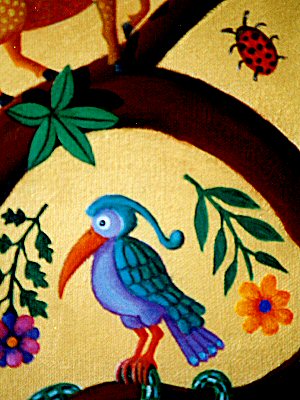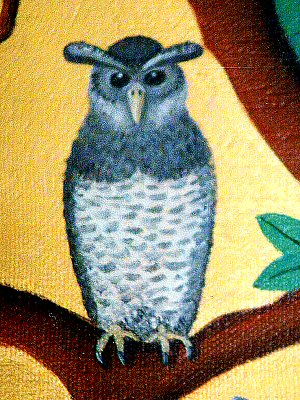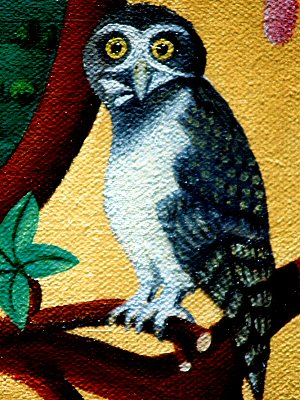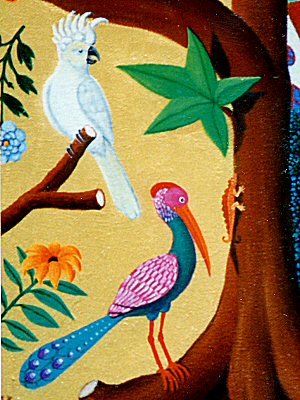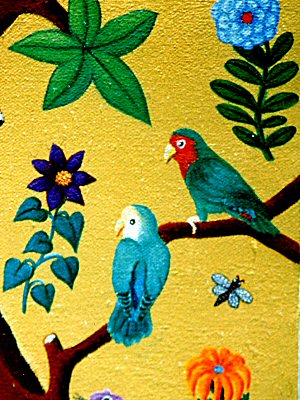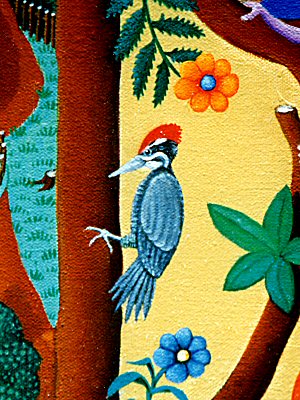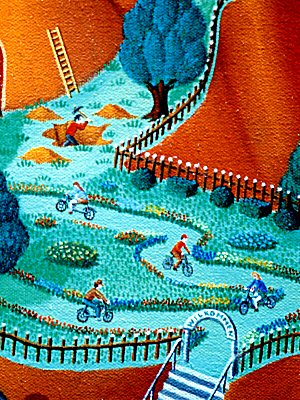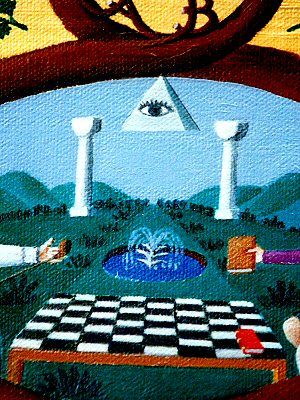THE MAGIC MOUNTAIN
Oil on canvas, 36 x 48 inches, 1997
(Private collection,
Orlando, Florida)
The Magic Mountain was
one of the most complex projects of the artist. The initial idea was to
create a painting which would resemble a page from a medieval illuminated
manuscript. This required the use of gold for the backgound and the
division of the "page" into the middle zone and the "marginal" zones. The
composition developed rapidly when the idea of trees with overlapping branches
allowed the "marginal" zone to be divided into small "compartments" each of
which could contain a numer of decorative elements. The rest was
relatively easy: the information provided to the artist by the family that
commissioned the painting inspired the idea that life is an unfinished
cathedral, being still under construction. This idea forms the basis of
the representation in the middle. Various episodes contribute to the
ascent to the cathedral: we see a hunting scene, a scene from a Munich park,
from a small business venture, and at the top of the painting, scenes from Hong
Kong and New York; materials for the cathedral are in the middle and many
workers participate in constructing it. In the "marginal" zone, as we can see,
the most important elements, related to the owners of the painting, are enclosed
in round or elliptical "windows." The bottom three include the initials of
the owners and the middle top one, besides some Masonic symbols,
incorporates the owners' portraits and refers to their love of golf, chess, and
reading. The left and right "windows" are devoted to the children of the
owners and include realistic portraits (rarely done by the artist).
Finally, the majority of space between the branches of the trees is filled with
real and imaginary animals, insects, birds, and flowers. All these elements represent
an advanced degree of one of the owners in German and her interest in Thomas
Mann's Magic Mountain,which provided the title for the painting.
Return to Index
